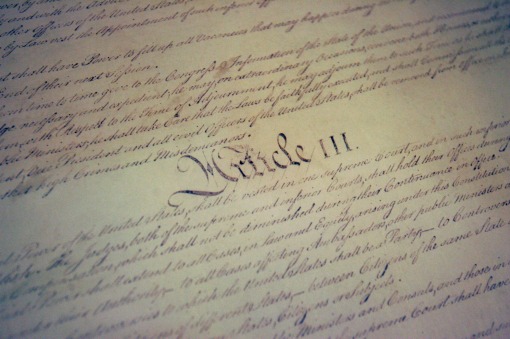Two important pieces of legal news for photographers today.
U.S. v. Stevens
 The Supreme Court today overturned a law that made photographs of animal cruelty illegal. The defendant, Stevens, was the first to be convicted under a federal law that banned the creation, sale, or possession of a depiction of animal cruelty.
The Supreme Court today overturned a law that made photographs of animal cruelty illegal. The defendant, Stevens, was the first to be convicted under a federal law that banned the creation, sale, or possession of a depiction of animal cruelty.
Much like child pornography laws, the law was designed to target the market for videos of animal cruelty, because it is often difficult to determine the person who committed the underlying cruel acts. Designed to allow law enforcement to go after “crush” videos, which appeal to a disgusting fetish for the crushing of small animals, the law in this case was applied to a video of dog fights.
The problem with the law, as evidenced by the fact that it was used against a dog fight video (not that I am any fan of that either), was that it was way too broad, and could potentially impact journalists, as well as others exercising their First Amendment rights. There was an exception for any depiction that has “serious journalistic value,” but the term “serious” excluded too much, and there was no exception for entertainment. The NPPA joined the Reporters Committee for Freedom of the Press in filing an amicus brief.
The Supreme Court ruled that the law explicitly punished expression based on the content. Although speech restrictions based on content are allowed in a few exceptions, namely, obscenity, defamation, fraud, incitement, and speech integral to criminal conduct, and some specific narrowly tailored areas, this was not one of them, and the court declined to create a new category.
In attempting to bring videos of animal cruelty to the level of child pornography, the government proposed the following test for adding new areas of exception to the First Amendment : “Whether a given category of speech enjoys First Amendment protection depends upon a categorical balancing of the value of the speech against its societal costs.”
Justice Roberts responded, “As a free-floating test for First Amendment coverage, that sentence is startling and dangerous.” The court declined to carve out a new exception to the First Amendment for animal cruelty.
Finding that the law was far too much of a limitation on the First Amendment, Roberts said, “We read §48 to create a criminal prohibition of alarming breadth.”
There are some great lines in the opinion, including, “We would not uphold an unconstitutional statute merely because the Government promised to use it responsibly.”
Animal rights fans, take heart. The court did “not decide whether a statute limited to crush videos or other depictions of extreme animal cruelty would be constitutional. We hold only that §48 is not so limited but is instead substantially overbroad, and therefore invalid under the First Amendment.”
You can read the entire opinion, and the dissent, here. There is also a good analysis of the ruling on the SCOTUS blog.
Ken Light v. Current TV
Also important for photographers is the ongoing case of Ken Light, a San Francisco photographer who took Current TV to small claims court for “unfair competition,” after they violated his copyright. Light originally won the case, but Current TV appealed it and the court threw the case out. The reason- it was basically a copyright violation and small claims courts do not have jurisdiction over copyright, only federal court does.
I am aware of some cases where a copyright violation was successfully taken to small claims court as a breach of contract or failure to pay an invoice, but it is always a risk as the federal courts have exclusive jurisdiction over copyright claims.
There is a wonderful story about the case, and the legal history of “in-line linking” on the NPPA website. I recommend it.
UPDATE: The New York Times calls the ruling a “major and muscular First Amendment ruling“

 This is not the first time this conflict has come up. And it has been ignored before, or rather, dealt with by reverting to the pre-raise salary.
This is not the first time this conflict has come up. And it has been ignored before, or rather, dealt with by reverting to the pre-raise salary.
Comments